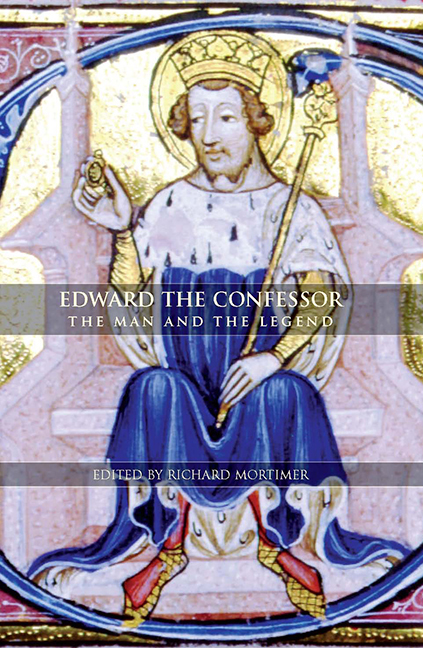Book contents
- Frontmatter
- Contents
- List of illustrations
- List of maps
- Preface
- Abbreviations
- Genealogical table
- 1 Edward the Confessor: the Man and the Legend
- 2 Edward the Ætheling (c. 1005–16)
- 3 Edward and Normandy
- 4 Edward the Confessor and the Succession Question
- 5 Edith, Edward's Wife and Queen
- 6 Edward the Confessor's Westminster Abbey
- 7 New Glimpses of Edward the Confessor's Abbey at Westminster
- 8 Craftsmen and Administrators in the Building of the Confessor's Abbey
- 9 The Sanctity and Canonisation of Edward the Confessor
- Bibliography
- Index
1 - Edward the Confessor: the Man and the Legend
Published online by Cambridge University Press: 25 October 2017
- Frontmatter
- Contents
- List of illustrations
- List of maps
- Preface
- Abbreviations
- Genealogical table
- 1 Edward the Confessor: the Man and the Legend
- 2 Edward the Ætheling (c. 1005–16)
- 3 Edward and Normandy
- 4 Edward the Confessor and the Succession Question
- 5 Edith, Edward's Wife and Queen
- 6 Edward the Confessor's Westminster Abbey
- 7 New Glimpses of Edward the Confessor's Abbey at Westminster
- 8 Craftsmen and Administrators in the Building of the Confessor's Abbey
- 9 The Sanctity and Canonisation of Edward the Confessor
- Bibliography
- Index
Summary
IT IS BOTH Edward the Confessor's posthumous fortune and misfortune that his reign led into the Norman Conquest. The rights and wrongs of 1066 and the associated propaganda have cast their shadow over everything written about him since, making it a difficult and delicate matter to disinter the historical Edward, and leading to contrasting views among modern historians of the period. The process of turning Edward into England's premier royal saint and Westminster Abbey's principal relic, on the other hand, responded to the needs of the Anglo-Norman world in which that process developed. Edward the man will be especially hard to know: given that it is difficult enough to feel we know our contemporaries, how can we hope to catch even a glimpse of an eleventh-century king? The biographical approach which is our best hope will have its own distortions – kings are not necessarily the prime movers, nor is a society simply the sum of the individuals in it. Sanctity will add a further layer of mystery: his sanctity can only be in the minds of beholders whose views have come down to us. Edward lived in a period not well endowed with writers interested in contemporary affairs, so that original sources are meagre or lacking. Only contemporary sources can be used to shed light on Edward's life, and we shall have to treat them with caution as they will have their own purposes. We shall begin with an examination of contemporary sources, and use them to reflect on how to assess Edward as man and king, and see what historians have made of him. We shall then look at the development of the cult, especially how it arises out of contemporary or near-contemporary views of the king. After his canonisation in 1161 the cult continued to develop. Edward is myth and legend as well as historical figure, and it may not prove easy to separate them.
- Type
- Chapter
- Information
- Edward the ConfessorThe Man and the Legend, pp. 1 - 40Publisher: Boydell & BrewerPrint publication year: 2009

